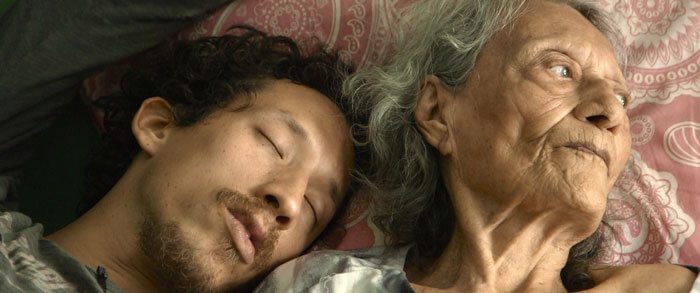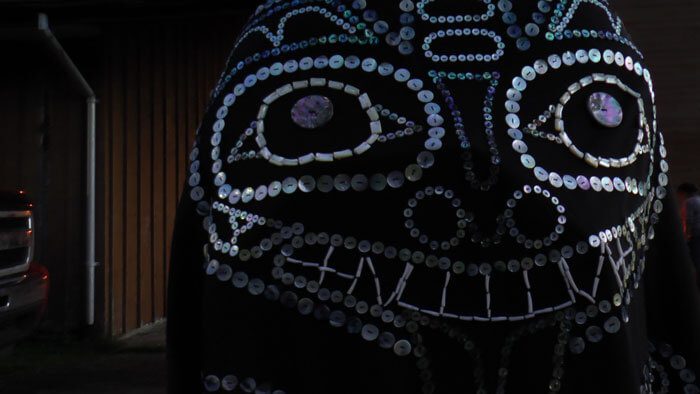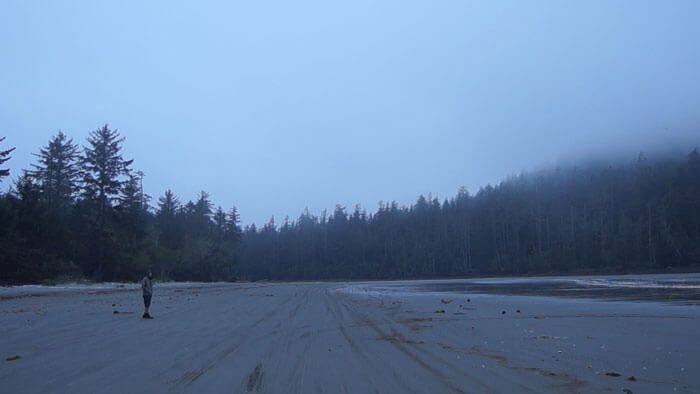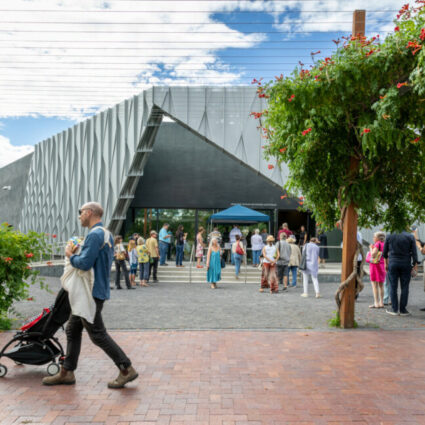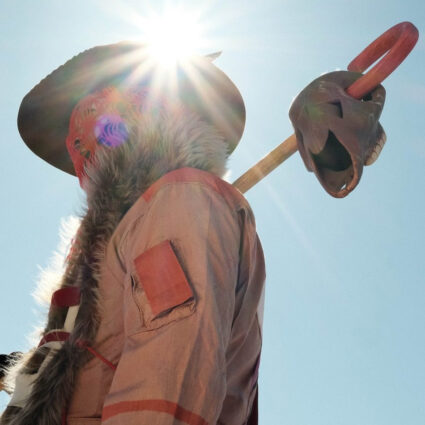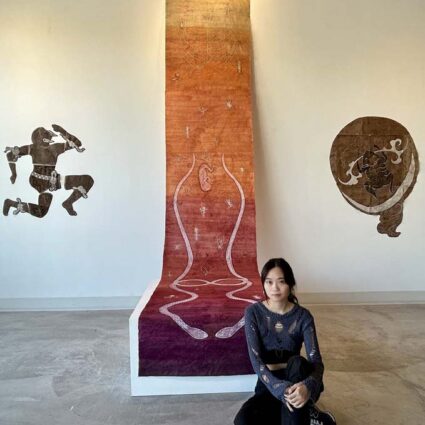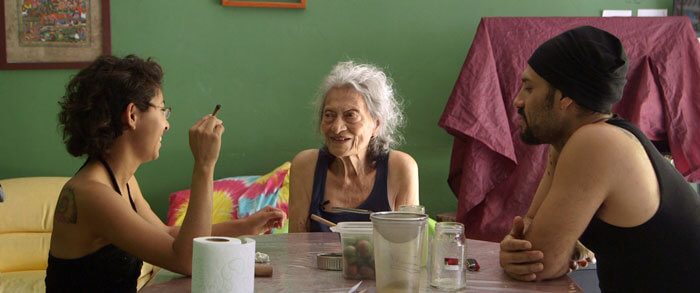
Erick Stoll & Chase Whiteside, América, 2018, video still with Cristina Hernández Martínez, América Capdevielle Levas, and Rodrigo Alvarez Serrano. Courtesy of the filmmakers.
Various venues, Santa Fe
October 17–21, 2018
In the summer of 2015, I called my mother to tell her she had to move out of her house in Portland, Oregon. My sister, on conference call from Minneapolis, agreed. We were both breathless. That morning, we’d inhaled Kathryn Schulz’s infamous New Yorker article, “The Really Big One” (“An earthquake will destroy a sizable portion of the coastal Northwest. The question is when.”). Inside of our fear, the only control we had over our parents’ survival seemed to lie in our ability to conjure urgency as we read from a compiled list of middle-sized cities facing fewer threats of imminent seismic activity.
The two years since the 2016 election have taught us many things about living in the center of fear. There is very little question of whether an earthquake is coming—rather, we are beginning to locate ourselves in the center of an earthquake, one that has gestated and continues to roil: socially, politically, environmentally, economically. The 2018 Santa Fe Independent Film Festival attends to our present condition. Everything is broken. The ability to sit in tatters with open eyes is, itself, a resistance.
Leilah Weinraub’s documentary, Shakedown, situates its viewers directly under the disco ball of a black lesbian strip club in early-2000s LA. Without heavy-handed contextualization, the film opens the club’s doors and exhibits the extraordinary performances of the dancers, as well as the mood of a close-knit community operating in a timely subversive bubble. The viewing experience is underlined, in part, by the audience’s awareness that the Shakedown no longer exists: the club was shuttered in 2004 following a series of predictable LAPD raids in gentrifying Los Angeles. The film also contains modern-day interviews with the Shakedown Angels (the club’s dancers), reflecting on their experiences and reading from a fabricated monologue written by the director, inviting viewers not only to step into the memory of the club, but also to inhabit its nostalgia. Shakedown serves as a reference point as well as a preview for the potential of a groundbreaking liberation of sexuality (and blackness, and queerness) outside of systemic oppression—one that feels devastatingly far off yet is simultaneously gaining magnitude underground.
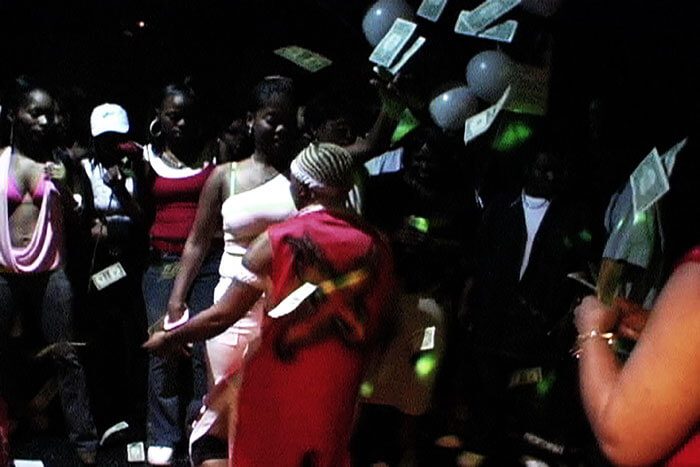
Nestled in the Blue Ridge Mountains, an ex-actress calls upon her estranged daughter and granddaughter in Alex O Eaton’s delightfully visual debut, Mountain Rest. While at times the dialogue slips below the rigor of the scenic design, the film chooses death as its subject, without bending into its inherent stigma or tragedy. The backdrop of pine trees and family dysfunction leaves a rich platform for reconfiguring expectations around motherhood, survival, and love. I watched this back-to-back with Chase Whiteside and Erick Stoll’s América, a documentary about three brothers in Mexico coming together to care for their elderly grandmother (the film’s namesake). América beautifully articulates the joy and burden of this labor, and the intimate camera and charismatic cast make this one of my favorite viewing experiences of the year. While entirely unique, both Mountain Rest and América address sickness and the end of life outside of the American healthcare system and provide intimate portraits of two families grappling to hold onto one another while everything in their lives dislodges underfoot.
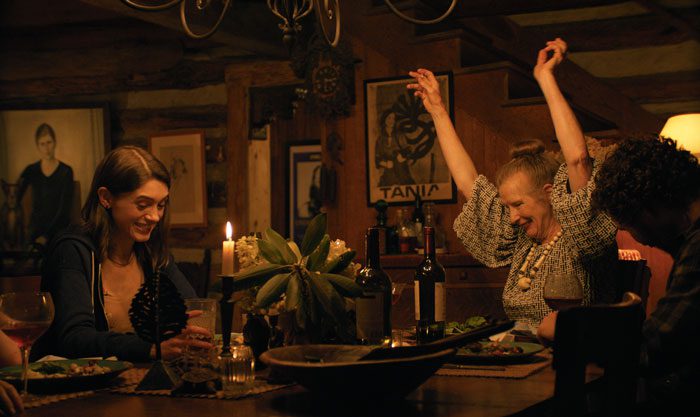
White Ravens: A Legacy of Resistance (Georg Koszulinski), shares memories of the violent colonialism on Haida Gwaii, a chain of islands off the Pacific Northwest. The film follows a young Haida poet, Towustasin Stocker, as he makes his way around the island, pausing to step into verse like a Shakespearian bard, collapsing present experiences and those of his ancestors. Different generations share traumatic memories of the Alert Bay Residential School, its past violence and persisting traumas. The deeply felt film, while at times aesthetically resembling an emo music video, provokes hope of rebuilding a community deeply grooved with generations of oppression. “Haida Gwaii is so close to the edge of this plate… it wants to flip,” says Stocker, discussing the tectonic fault line beneath the island. The Haida people seem ready for the earthquake: their work resides in the shaking and rumbling of a legacy of systemic persecution as they strive to rebuild the island’s culture for future generations.
